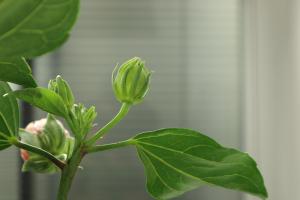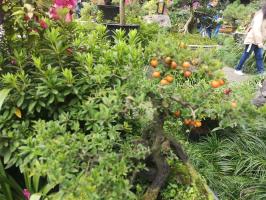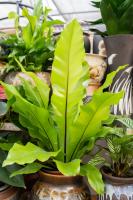1、 Curing method
1. Soil: wide leaf immortal bird is suitable for growing in loose, breathable and nutritious sandy soil. The soil that supports it needs to have good drainage. If possible, you can buy nutritious soil for planting
2. Light: its growth needs to ensure sufficient sunlight. Insufficient light will affect its normal growth, resulting in growth problems such as overgrowth and leaf wilting

3. Temperature: its growth temperature should be controlled between 13 and 19 degrees. In winter, it should be moved into indoor breeding, and the temperature should be controlled between seven and ten degrees. This will ensure that it can survive the winter safely
4. Moisture: it is very drought resistant, and the basin soil should be moist during the growth period. In the summer, we should spray the plants properly to cool the plants. We should control watering in winter and water less. p>

2、 Breeding skills
1. Changing pots: the wide leaf immortal bird grows almost all year round and has a high survival rate. When its stems and leaves grow too high, it can pick the heart, lower the plant type and promote its multiple branches. Every spring, it should return a new pot to the plant to ensure the beauty of the plant
2. Pruning: the young seedlings in the new pot should be picked in time to promote branching. If there are older plants, they should be cut off to promote the germination of new buds

3、 Problem diagnosis
1. Diseases: Botrytis cinerea and powdery mildew are common diseases, which can be sprayed with methyltobuzin powder liquid or prevented on a daily basis
2. Insect pests: scale insects and aphids, which are also common pests, should be isolated first, and then sprayed with 1000 times of dimethoate emulsion. This kind of insect killing effect is better

4、 Other issues
1. Whether it can be raised at home: it can be raised at home, but pay attention not to water too much. Too frequent watering will lead to root rot. ventilation should be carried out frequently to facilitate plant growth
2. Rain: the cultivation of such plants does not need too much water, so they cannot be exposed to rain. A large amount of rain erosion and deposition will damage the root structure and shorten the growth life of secondary plants


 jackfruit
jackfruit snake plant
snake plant hibiscus
hibiscus hydrangea
hydrangea lavender
lavender Green roses climb al...
Green roses climb al... If you don't pay att...
If you don't pay att... Management of four g...
Management of four g...



































